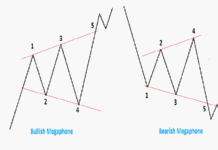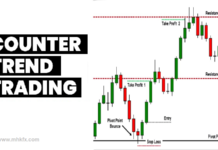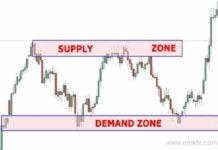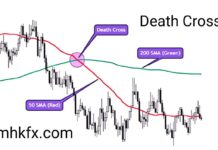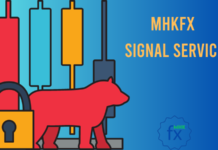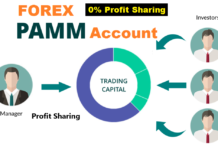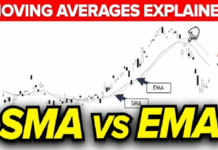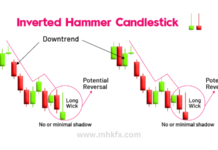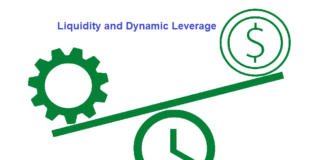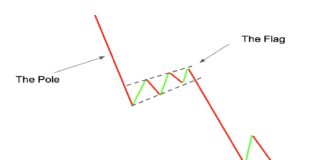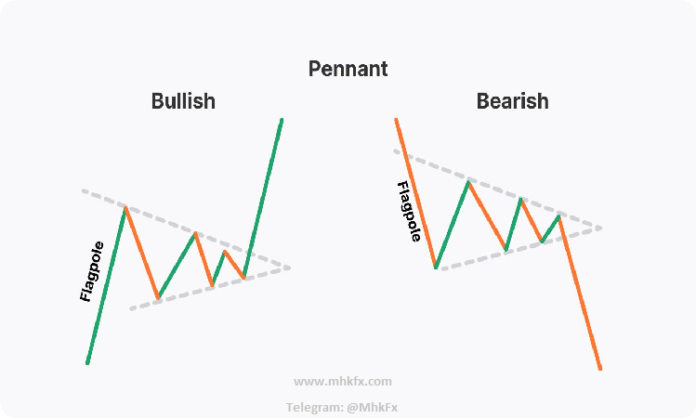
The foreign exchange market, or forex, is a global marketplace where currencies are traded. Forex traders are constantly seeking ways to identify profitable trading opportunities by analyzing various technical patterns. One such pattern that has caught the attention of forex traders is the pennant pattern formation. This article will explore the pennant pattern, its characteristics, and how forex traders can utilize it to identify potential trading opportunities.
Understanding the Pennant Pattern:
-
Definition and Characteristics
The pennant pattern is a widely recognized technical formation in the world of forex trading. It is a continuation pattern that appears on price charts, typically following a significant price move. The pattern itself resembles a small symmetrical triangle, formed by converging trendlines that connect the series of lower highs and higher lows.
During the formation of a pennant pattern, the market experiences a period of consolidation after a strong price move. This consolidation phase is characterized by decreasing trading volume and a contraction in price volatility. Traders often interpret this period of consolidation as a temporary pause in the prevailing trend, with the potential for an imminent continuation of the prior price move.
-
Bullish and Bearish Pennants
There are two types of pennant patterns: bullish pennants and bearish pennants. Each offers different insights into potential price movements and trading opportunities.
Bullish Pennants:
A bullish pennant pattern occurs when the market is in an uptrend. It indicates a temporary pause in the upward price movement before a potential continuation of the bullish trend. The converging trendlines in a bullish pennant formation create a narrowing triangle, suggesting that buying pressure is gradually overcoming selling pressure. Traders often interpret the breakout from a bullish pennant as a signal to enter long positions, expecting further price appreciation.
Bearish Pennants:
Conversely, a bearish pennant pattern appears in a downtrending market. It represents a brief consolidation period before a potential continuation of the bearish trend. The converging trendlines in a bearish pennant formation create a narrowing triangle, indicating that selling pressure is gradually outweighing buying pressure. Traders who identify a bearish pennant may consider entering short positions following a breakout from the pattern, anticipating further price depreciation.
Understanding the distinctions between bullish and bearish pennants is crucial for forex traders, as it allows them to align their trading strategies with the prevailing market trend.
By recognizing the formation of a pennant pattern and identifying whether it is bullish or bearish, traders can gain valuable insights into potential trading opportunities. However, it is important to note that technical analysis alone may not be sufficient for successful trading. Traders should complement their analysis of the pennant pattern with additional tools such as indicators, support and resistance levels, and fundamental analysis to make informed decisions.
Read more: Advanced Forex Indicator Takes the Market by Storm, Predicting Profitable Entry and Exit Points
Interpreting the Pennant Pattern:
Pattern Confirmation
When analyzing the pennant pattern, it is crucial to wait for a breakout or breakdown for confirmation before initiating a trade. A breakout occurs when the price moves above the upper trendline of the pennant, while a breakdown happens when the price drops below the lower trendline. The breakout or breakdown should ideally be accompanied by an increase in trading volume, indicating stronger market participation and confirming the validity of the pattern.
Traders often consider a breakout or breakdown as a signal to enter a trade in the direction of the prevailing trend. For example, in a bullish pennant pattern, a breakout to the upside suggests a continuation of the uptrend and may prompt traders to enter long positions. Conversely, in a bearish pennant pattern, a breakdown to the downside indicates a potential continuation of the downtrend, leading traders to consider short positions.
Measuring Price Targets
One advantage of the pennant pattern is its potential to provide price targets, which can assist traders in setting profit targets and managing risk. The height of the “flagpole” that precedes the consolidation phase can be used to estimate the potential price move after the breakout.
To measure the price target, traders can take the length of the flagpole and project it in the direction of the breakout. For example, if the flagpole measures 100 pips, a bullish breakout would suggest a potential price move of 100 pips to the upside from the breakout level. However, it is important to note that price targets are not guaranteed outcomes but rather provide a rough estimation of potential price movements.
By having an idea of the potential price targets, traders can set realistic profit targets and adjust their risk-reward ratios accordingly. This helps in creating a disciplined trading approach and managing positions effectively.
It’s worth mentioning that while the pennant pattern can provide valuable insights into potential price movements, it is always prudent to use the pattern in conjunction with other technical analysis tools, such as support and resistance levels, trend indicators, and oscillators. This holistic approach can enhance the accuracy of trade setups and increase the probability of successful trades.
Interpreting the pennant pattern involves confirming the breakout or breakdown and using the flagpole’s length to estimate potential price targets. Traders should exercise caution and consider additional technical indicators to complement their analysis before making trading decisions based on the pennant pattern.
Trading Strategies Using the Pennant Pattern:
Breakout Strategy
One common trading strategy using the pennant pattern is the breakout strategy. Traders employing this approach wait for the confirmed breakout from the pennant formation and enter trades in the direction of the breakout.
When employing the breakout strategy, traders typically place entry orders slightly above the upper trendline in the case of a bullish pennant or below the lower trendline in the case of a bearish pennant. This allows them to capture the momentum of the breakout while minimizing the risk of false breakouts.
To manage risk, traders often place a stop-loss order below the breakout point in a bullish pennant or above the breakout point in a bearish pennant. This helps limit potential losses if the price reverses after the breakout.
For profit-taking, traders can set a target based on the projected price move using the flagpole’s length. They aim to capture a portion of the expected price increase or decrease corresponding to the measured move. It’s essential to assess market conditions and adjust profit targets based on price action and support/resistance levels.
Pullback Strategy
Another trading strategy involving the pennant pattern is the pullback strategy. This approach takes advantage of price pullbacks that occur after the breakout from the pennant pattern.
Once the breakout occurs, traders wait for a pullback towards the broken trendline or other significant support/resistance levels. They enter trades in the direction of the breakout during the pullback, aiming to capture a potentially better risk-reward ratio.
In this strategy, traders place entry orders at strategic levels, such as the breakout level or key support/resistance areas. The stop-loss order is typically placed below the recent swing low in a bullish pennant or above the recent swing high in a bearish pennant.
Profit targets can be set based on nearby resistance or support levels, or traders can use a trailing stop-loss method to maximize profits if the price continues in the desired direction. It’s important to note that both the breakout and pullback strategies using the pennant pattern require careful risk management, including setting appropriate stop-loss levels and position sizing based on individual risk tolerance.
Traders should also consider other technical indicators, such as oscillators or trend-following indicators, to confirm the strength of the breakout or pullback and support their trading decisions.
As with any trading strategy, it’s crucial to practice and test these approaches on a demo account or with small position sizes before implementing them with real capital. This helps traders gain confidence in their methodology and refine their skills.
In conclusion, traders can employ either the breakout or pullback strategy when trading the pennant pattern. Each strategy has its own advantages, and it’s important to consider market conditions, risk tolerance, and other technical factors when making trading decisions.
Real-Life Examples:
Let’s explore a couple of real-life examples of the pennant pattern in forex trading to illustrate its application and potential outcomes.
- Example: EUR/USD Bullish Pennant
In this example, let’s say the EUR/USD currency pair has been in an uptrend, and a bullish pennant pattern forms on the chart. Traders identify the pattern and wait for confirmation of a breakout. Once the price breaks above the upper trendline of the pennant with increased volume, traders enter a long position.
Following the breakout, the price of EUR/USD experiences a sharp upward movement, validating the continuation of the uptrend. Traders who entered the trade based on the bullish pennant pattern may ride the upward momentum and set their profit target based on the measured move of the flagpole. They can use technical tools like Fibonacci extensions or nearby resistance levels to determine potential exit points.
- Example: USD/JPY Bearish Pennant
In this scenario, let’s consider the USD/JPY currency pair, which has been in a downtrend. A bearish pennant pattern forms on the chart, indicating a potential continuation of the downward price movement. Traders monitor the pattern and wait for a breakdown confirmation.
Once the price drops below the lower trendline of the pennant with increased volume, traders enter a short position, expecting the downtrend to resume. As the price breaks down, the USD/JPY experiences a significant decline, confirming the bearish sentiment. Traders who entered based on the bearish pennant pattern may consider setting profit targets using technical tools like Fibonacci retracements or nearby support levels.
It’s important to note that while the pennant pattern provides valuable insights into potential price movements, it is not a foolproof strategy. Market conditions can change, and false breakouts can occur. Therefore, it’s crucial to incorporate other technical analysis tools, such as support and resistance levels, trend indicators, and oscillators, to increase the accuracy of trade setups.
Furthermore, traders should adapt their strategies to the specific characteristics of each currency pair and consider fundamental factors that may influence price movements, such as economic data releases, central bank decisions, or geopolitical events.
Conclusion:
The pennant pattern in forex trading offers traders the opportunity to identify potential trading opportunities and participate in the continuation of trends. By understanding the pattern’s characteristics, interpreting breakouts or breakdowns, and employing appropriate trading strategies, traders can capitalize on the pennant pattern’s potential profits.
However, it is essential to remember that no trading strategy is infallible, and risk management remains crucial. Traders should always employ proper risk management techniques, including setting stop-loss orders and managing position sizes according to their risk tolerance.
By combining the pennant pattern with other technical analysis tools and staying informed about market developments, traders can enhance their trading decisions and improve their overall trading performance in the forex market.
Related Post:
Double Your Trading Power with LMFX Deposit Bonus : Don’t Miss Out

